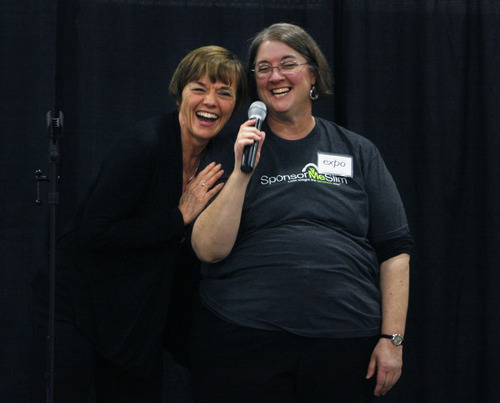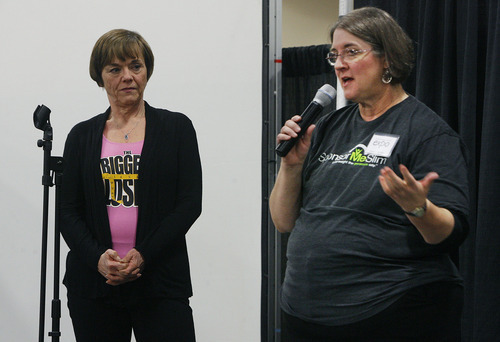This is an archived article that was published on sltrib.com in 2012, and information in the article may be outdated. It is provided only for personal research purposes and may not be reprinted.
Sandy • Some people go decades after a diabetes diagnosis without really knowing what to do about it — victims of insufficient health insurance, bad advice or mixed messages.
That's why educational events like Saturday's 2012 Diabetes Expo at the South Towne Expo Center continue to be big draws for people eager to improve their health, said Dawn Higley, a nurse and certified diabetes educator who volunteered at the American Diabetes Association event. The expo drew an estimated 5,000 people.
"Some doctors will just say, 'OK, don't eat sugar,' " Higley said. "Oh my God! It's so much more than that."
Others put a blanket prohibition on white starches like rice or potatoes, she said, when balance and portion sizes — not hard boundaries — are the real keys.
Patients and those trying to keep from becoming patients wandered booths where medical care providers and medicine suppliers gave advice, blood sugar and blood pressure tests and even some free testing supplies. Some of the attendees come each year just to get a minimum level of health care because they don't have insurance, Higley said.
Most on Saturday were mainly interested in knowledge. Harmons, a sponsor of the event, attracted dozens to each of several cooking seminars designed to maximize the diabetic's nutrition and avoid blood-sugar spikes. The seminars emphasized new federal guidelines using a plate rather than the familiar food pyramid to suggest that no more than a quarter be filled with starches, grains or starchy vegetables such as potatoes, corn or peas.
Rice, for instance, is OK, Harmons dietitian Jessica LaRoche said, but "fruits and veggies should be the star." Fruits, though, count toward carbohydrate limits that diabetics should impose on any meal plan, she said. Portion control is important.
While a Harmons chef prepared a quick chicken cacciatore using a jar of low-sugar pepper and tomato sauce, LaRoche told the audience it's important to read labels and limit saturated fat, sodium and added sugars.
"I never paid attention before," said Cecilia Escobar, a South Jordan woman attending the expo to learn to treat her husband's diabetes and prevent an onset for herself. The switch to a plate instead of a food pyramid should help her determine portion sizes, she said. "That, I like a lot — the simplicity."
A diabetes doctor from St. Mark's Hospital spoke to dozens more with a dose of hard reality but also hope. Fast food, sodas and inactivity have led to obesity rates that are driving a diabetes epidemic, Jim Chamberlain said. Nearly a third of American adults are now obese, while 59 percent get no vigorous physical activity.
The good news, he said, is that numerous improved medicines have come on the market in the past six years, while at the same time public awareness has grown. He urged people with Type 2 diabetes — the kind linked to weight gain — to get active and model better lifestyles for their children.
"You can actually make this disease disappear," he said.
Diabetes resources in Utah
About 6 percent of Utah adults have been diagnosed with diabetes and another 2 percent have the disease but don't know it, according to the state Health Department's Utah Diabetes Prevention and Control Program. The program partners with health professionals to improve diabetes management and public awareness of the disease.
For more information • 801-538-6141
Find prevention and testing tips • http://1.usa.gov/xFhAPA
Follow on Twitter • @UtahDiabetes
Contact program manager Nathan Peterson • nathanpeterson@utah.gov
Diabetes-related links • Download a glucose log and find other information at http://1.usa.gov/xsSq8g







